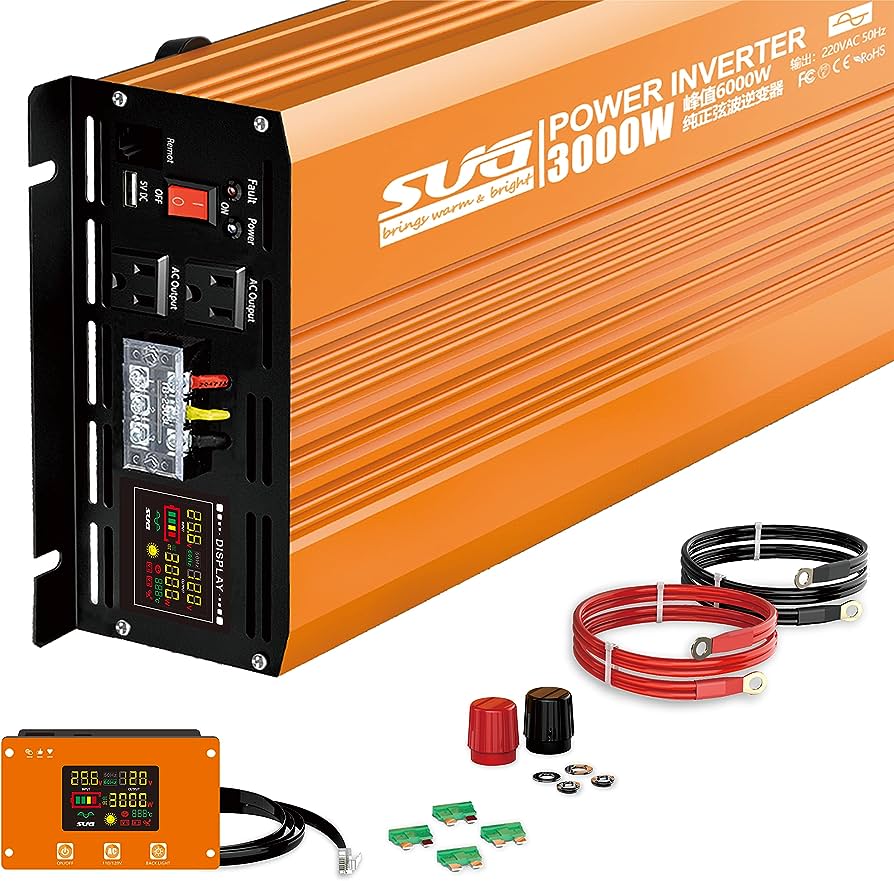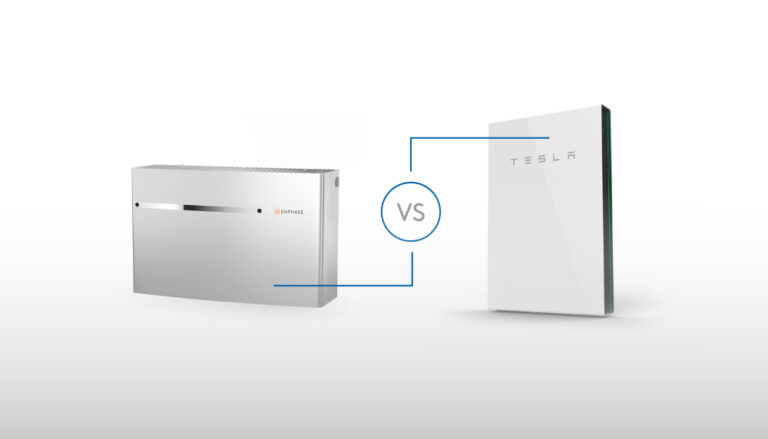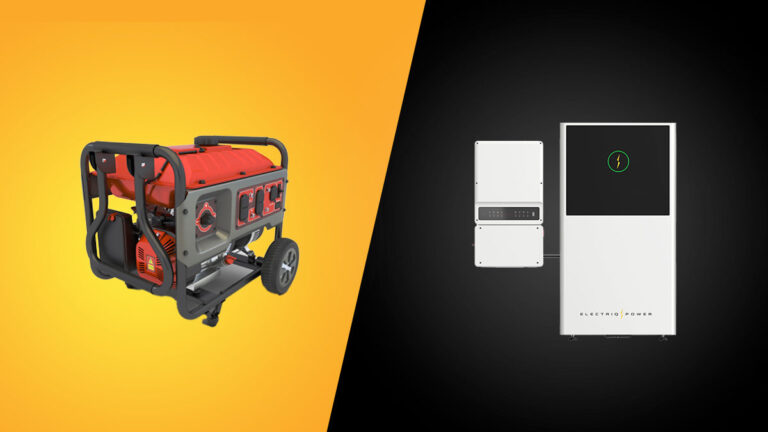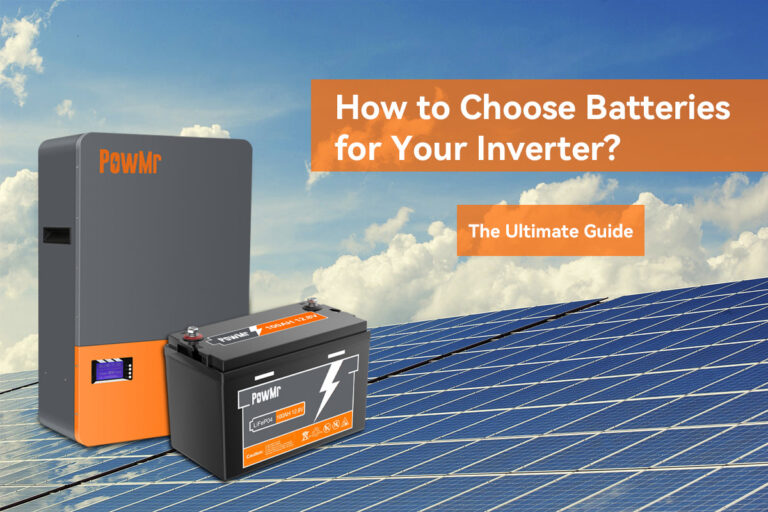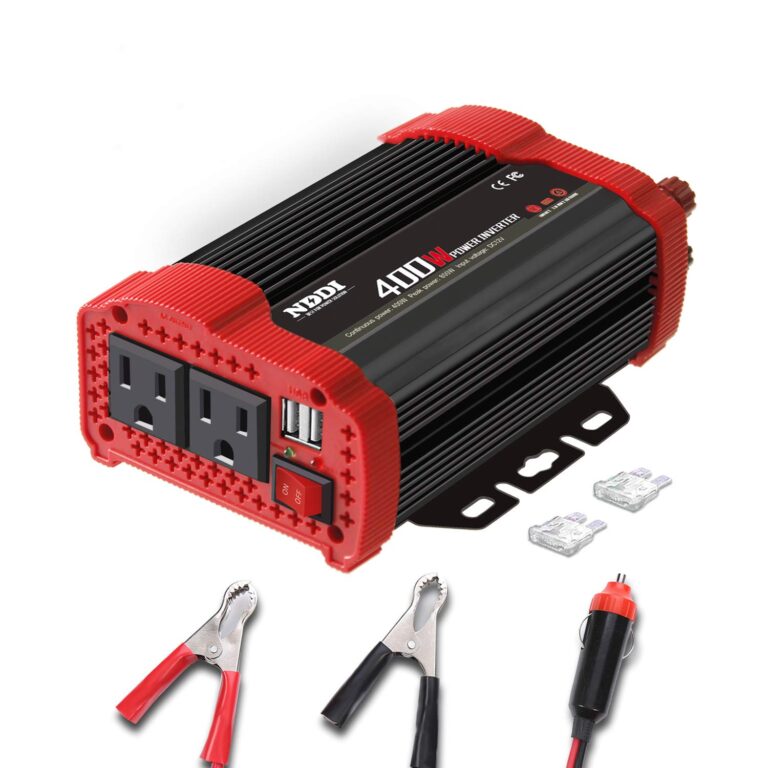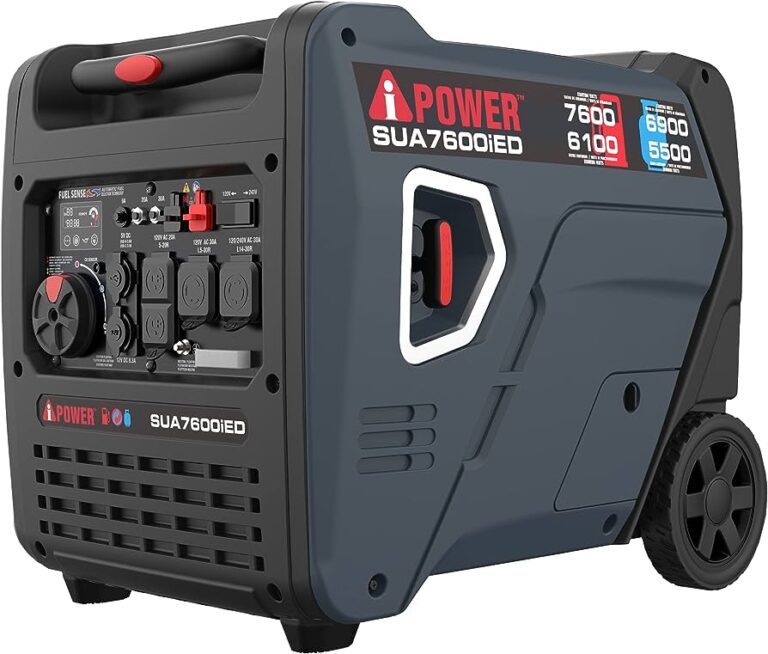Converting 24V Dc to 120V Ac: Inverter Solutions Explained
Inverter solutions allow for the conversion of 24V DC power to 120V AC power, providing the necessary voltage and frequency regulation to power various appliances and equipment. These inverters can handle the high start-up power requirements of devices like microwaves, refrigerators, and sump pumps.
They are designed to be efficient and reliable, making them a cost-effective option for converting DC to AC power.
How Inverters Convert Dc To Ac
Inverter solutions can convert 24V DC power to 120V AC power by rapidly switching the DC input on and off to create alternating current. These pulses are then smoothed by capacitors and inductors to form a sinusoidal waveform, allowing for the conversion from DC to AC power.
An inverter is a device that converts direct current (DC) to alternating current (AC). It is commonly used in various applications, including renewable energy systems, automotive electronics, and emergency power backup systems. Here’s how inverters achieve this conversion:
Switching The Dc Input On And Off Rapidly:
- The inverter works by rapidly switching the DC input on and off.
- This switching action creates pulses of current that alternate between positive and negative values.
- The rapid switching frequency can range from a few hundred hertz to several kilohertz, depending on the application.
Creating Pulses Of Current That Alternate Between Positive And Negative:
- By switching the DC input rapidly, the inverter generates pulses of current that alternate between positive and negative values.
- This alternating current mimics the waveform of standard AC power.
Filtering And Smoothing The Pulses With Capacitors And Inductors:
- To convert the pulsating DC into a smoother AC waveform, the inverter employs capacitors and inductors.
- Capacitors help filter out any high-frequency noise and stabilize the voltage.
- Inductors, on the other hand, smooth out the pulsating current by storing and releasing energy.
Forming A Sinusoidal Waveform, The Most Common Type Of Ac:
- After passing through the filtering and smoothing stages, the inverter’s output is transformed into a sinusoidal waveform.
- This sinusoidal waveform represents the most common type of AC power found in homes and most electrical devices.
- The inverter ensures that the frequency and amplitude of the AC waveform match the desired output specifications.
Inverters convert DC to AC by rapidly switching the DC input, creating alternating pulses of current, filtering and smoothing these pulses with capacitors and inductors, and ultimately forming a sinusoidal waveform. This process allows DC-powered devices to operate using AC power, enabling a wide range of applications across various industries.
Understanding Inverter Efficiency
Understanding inverter efficiency is essential when converting 24V DC to 120V AC using inverter solutions. Inverters employ rapid switching of the DC input to create pulses of current that are then filtered and smoothed to produce a sinusoidal waveform, ensuring optimal AC output.
The Efficiency Of An Inverter And Its Impact On Power Conversion:
An inverter’s efficiency plays a crucial role in converting 24V DC to 120V AC. The efficiency of an inverter determines how effectively it can convert the input power to the desired output power, which directly affects its overall performance. Here are some key points to understand about inverter efficiency:
- Higher efficiency results in less energy loss during the conversion process, maximizing the output power while minimizing wastage.
- Inverter efficiency is typically represented as a percentage, indicating the proportion of input power that is successfully converted to output power.
- A higher efficiency rating means that the inverter can convert a greater percentage of the input power, leading to better energy utilization.
- Inefficient inverters may generate more heat, which can affect their performance, longevity, and overall reliability.
Factors That Affect Inverter Efficiency:
Several factors influence the efficiency of an inverter. Understanding these factors can help you choose the most efficient inverter for your needs. Some important factors to consider include:
- Inverter design: The overall design and architecture of an inverter can significantly impact its efficiency. Different technologies and topologies have varying levels of efficiency.
- Load capacity: The efficiency of an inverter might vary depending on the load capacity it can handle. Some inverters may have better efficiency at specific load ranges.
- Input voltage: The input voltage supplied to the inverter can affect its efficiency. Inverters are designed to operate optimally within certain voltage ranges.
- Quality of components: The quality and type of components used in an inverter can influence its overall efficiency. High-quality components are more likely to deliver better efficiency.
- Operating temperature: Inverter efficiency can be affected by the ambient temperature at which it operates. In general, higher temperatures can reduce efficiency.
Choosing An Inverter With High Efficiency For Optimal Performance:
To ensure optimal performance and energy utilization, it is essential to choose an inverter with high efficiency. Consider the following when selecting an inverter:
- Look for inverters with high efficiency ratings. Aim for inverters with efficiency ratings above 90%.
- Consider the specific load capacity requirements for your application to ensure that the inverter operates efficiently within that range.
- Research and compare different inverter models to find the best combination of efficiency, reliability, and cost-effectiveness for your needs.
- Pay attention to the manufacturer’s reputation and customer reviews to gauge the overall performance and efficiency of the inverter.
- Consult with experts or professionals in the field to get recommendations or guidance on choosing the most efficient inverter for your specific requirements.
Investing in an efficient inverter will not only help you optimize power conversion but also reduce energy wastage and potentially save on electricity costs in the long run.
Types Of Inverter Solutions
Inverter solutions are capable of converting 24V DC to 120V AC, providing a reliable and efficient power source for various applications. These solutions utilize advanced technology to create a sinusoidal waveform, ensuring compatibility with most AC devices and appliances.
Pure sine wave inverters:
- Description: Pure sine wave inverters are designed to replicate the smooth curve of an ideal sine wave. They provide high-quality power that is nearly identical to utility-grade AC power.
- Advantages and applications:
- Suitable for sensitive electronics and appliances: Pure sine wave inverters are ideal for powering sensitive devices such as laptops, medical equipment, and televisions, as they deliver clean and stable power without distortion or interference.
- Applications: These inverters are commonly used in RVs, boats, off-grid solar systems, and in situations where high-quality power is essential.
Modified sine wave inverters:
- Description: Modified sine wave inverters produce an approximation of a sine wave, with a step-like waveform. The output waveform may not be as smooth as pure sine wave inverters.
- Advantages and limitations:
- Suitable for basic electronic devices and appliances: Modified sine wave inverters are suitable for powering devices such as lights, fans, and basic electronics that can tolerate a slightly less precise power source.
- Limitations: Some appliances, particularly those with sensitive circuits or motors, may produce a humming sound or experience reduced efficiency when powered by modified sine wave inverters.
Microinverters:
- Description: Microinverters are individual inverters attached to each solar panel in a system, converting DC power to AC power on a panel-by-panel basis.
- Advantages and applications:
- Increases overall system efficiency: Microinverters optimize the performance of each solar panel individually, ensuring maximum energy harvest, even if one panel is shaded or affected by dirt or debris.
- Applications: These inverters are commonly used in residential and commercial solar installations, where the flexibility, redundancy, and improved performance of individual panel optimization are desired.
Pure sine wave inverters are suitable for sensitive electronics and appliances, while modified sine wave inverters are more appropriate for basic devices. Microinverters, on the other hand, are used in solar panel systems to optimize energy production at the individual panel level.
It’s important to consider the specific needs of your devices and applications when choosing the right inverter solution.
Choosing The Right Inverter For Your Needs
To convert 24V DC to 120V AC, it is crucial to choose the right inverter that can handle the power requirements of your appliances. Make sure to select an inverter that provides frequency and voltage regulated AC power to efficiently run all your loads, including start-up power-intensive devices like microwaves and refrigerators.
Power Requirements And Load Considerations:
- Determine the power requirements of your devices or appliances that need to be powered by the inverter.
- Consider the peak power and continuous power requirements of your devices. Peak power refers to the maximum power needed during start-up or transient loads, while continuous power is the steady power required during normal operation.
- Take into account the total wattage or amperage of all the devices you plan to run simultaneously on the inverter.
- Consider any additional power requirements for inductive loads, such as motors or compressors, which may require higher surge power for a few seconds during start-up.
Input And Output Voltage Compatibility:
- Check the input voltage compatibility of the inverter with your 24V DC power source. Ensure that the inverter is designed to handle 24V DC input.
- Verify that the inverter offers 120V AC output, which is the standard voltage for most household appliances and electronic devices in North America.
- Consider the frequency compatibility of the inverter, as AC devices typically operate at a frequency of 60Hz.
Safety Features And Certifications:
- Look for safety features such as overload protection, short circuit protection, and overheating protection in the inverter.
- Check for relevant safety certifications, such as UL certification, which ensures that the inverter meets specific safety standards.
- Consider additional safety features like low voltage alarm, voltage shut-off, or automatic shutdown to protect your devices and the inverter itself.
Sizing An Inverter For Optimal Performance:
- Calculate the total wattage or amperage of all the devices you plan to run simultaneously on the inverter.
- Add a safety margin of around 20-30% to account for any future increase in power requirements or unexpected power surges.
- Choose an inverter with a continuous power rating that matches or exceeds your total power requirement to ensure optimal performance.
- Consider the inverter’s efficiency and select a model with higher efficiency to minimize power loss during the conversion process.
By considering power requirements and load considerations, input and output voltage compatibility, safety features and certifications, and properly sizing an inverter, you can choose the right inverter for your needs.
Installing And Using An Inverter
Transforming 24V DC to 120V AC has never been easier with inverter solutions. By rapidly switching the DC input on and off, an inverter creates pulses of current that are then smoothed into a sinusoidal waveform, providing a reliable AC output for various applications.
Experience the convenience and versatility of using an inverter for all your power conversion needs.
In order to properly install and use an inverter, it is essential to follow certain guidelines and take necessary precautions to ensure safe operation. Here are some important points to keep in mind:
- Proper installation and wiring guidelines:
- Choose an appropriate location: Install the inverter in a well-ventilated area with sufficient space for heat dissipation.
- Secure the inverter: Mount the inverter securely to prevent vibration or movement during operation.
- Follow the manufacturer’s instructions: Read the user manual provided by the manufacturer for specific installation and wiring guidelines.
- Use the correct wire size: Select and use the appropriate gauge of wire according to the inverter’s power rating and the distance to the battery.
- Ensure proper grounding: Connect the inverter’s grounding terminal to a suitable grounding point following local electrical codes.
- Precautions for safe operation:
- Turn off the inverter before performing any maintenance or troubleshooting.
- Keep the inverter away from flammable materials and liquids to prevent fire hazards.
- Avoid overloading the inverter beyond its rated capacity to prevent damage.
- Regularly inspect the inverter for any signs of wear, damage, or loose connections.
- Disconnect the inverter from the power source when not in use for an extended period.
Monitoring And Troubleshooting An Inverter System
Monitoring and troubleshooting an inverter system is crucial to ensure its optimal performance. Here are some key points to consider:
- Monitoring the inverter system:
- Check the LED indicators: Monitor the status of the inverter system by observing the LED indicators. These indicators provide information about the input voltage, output power, and any fault conditions.
- Use a monitoring device: Utilize a monitoring device, such as a digital multimeter, to measure and monitor the voltage, frequency, and waveform of the output power.
- Monitor battery voltage: Keep an eye on the battery voltage to ensure it remains within the recommended range.
- Troubleshooting common issues:
- Check the connections: Inspect the wiring connections to ensure they are secure and properly connected.
- Verify battery condition: Test the battery to ensure it is in good condition and capable of providing the required power.
- Look for fault indicators: If the inverter displays any fault codes or indicator lights, consult the user manual or reach out to the manufacturer for troubleshooting guidance.
- Seek professional assistance if necessary: If you encounter any complex issues or are unsure about troubleshooting, it is advisable to seek the help of a qualified technician.
By following the proper installation and wiring guidelines, taking necessary precautions, and monitoring and troubleshooting the inverter system, you can ensure its safe and efficient operation. Always refer to the manufacturer’s instructions and guidelines for specific details related to your particular inverter model.
Inverter Applications And Use Cases
Economically convert 24V DC power to regulated 120V AC with inverter solutions, handling the power requirements of various devices such as microwaves and refrigerators. Tripp Lite Industrial Inverter is a reliable option for converting 24vdc to 120vac.
Off-Grid And Backup Power Systems:
- Off-grid and backup power systems often rely on inverters to convert 24V DC to 120V AC.
- These systems are commonly used in remote locations where access to the utility grid is limited or non-existent.
- Inverters play a crucial role in providing power for off-grid cabins, remote communication towers, and emergency backup systems.
- They enable users to run essential appliances and devices such as refrigerators, lights, and communication equipment.
Rv And Marine Applications:
- Inverter solutions are widely used in recreational vehicles (RVs) and marine applications to power various appliances onboard.
- In an RV, an inverter allows travellers to use regular household appliances while on the road, providing convenience and comfort.
- Similarly, in boats and yachts, inverters enable the operation of electronic devices like televisions, refrigerators, and navigation systems.
- Inverter systems in RVs and marine applications can also charge batteries and provide power during camping or boating trips.
Solar Power Systems:
- Inverters are an essential component of solar power systems, converting the DC electricity generated by solar panels into AC electricity that can be used in homes and businesses.
- There are two main types of solar inverters: String inverters and microinverters.
- String inverters are commonly used in large, grid-tied solar installations, while microinverters are popular in residential and small-scale systems.
- Solar inverters ensure the efficient and reliable conversion of solar energy, enabling users to reduce their reliance on traditional power sources and save on electricity costs.
Emergency And Disaster Preparedness:
- Inverter solutions are crucial for emergency and disaster preparedness, providing power when the grid goes down.
- During natural disasters or emergencies, having a backup power system with an inverter can be a lifesaver.
- Inverter-powered systems can keep critical appliances running, such as medical equipment, communication devices, and emergency lighting.
- With an inverter, users can stay connected, keep their food fresh, and maintain a sense of normalcy during challenging times.
Inverters have diverse applications and use cases, ranging from off-grid power systems and RVs to solar installations and emergency preparedness. Their ability to convert 24V DC to 120V AC enables the use of standard household appliances and provides power in various scenarios.
Whether it’s for remote locations, recreational vehicles, or renewable energy systems, inverters play a vital role in meeting our power needs.

Credit: certifiedmtp.com
Can a 12 Volt to 120 Volt Inverter Also Convert 24V DC to 120V AC?
Yes, there are 12 volt to 120 volt inverter options available that can also convert 24V DC to 120V AC. These versatile inverters allow you to power AC devices using DC power sources like batteries. By converting the voltages, they provide flexibility in utilizing different power inputs for various applications.
Is a 220V Solar Inverter Compatible with a 24V DC Power Source?
A 220V solar inverter may not be compatible with a 24V DC power source, as the voltage specifications are significantly different. The 220v inverter technology is designed to convert DC power from solar panels into AC power at a higher voltage level. To ensure compatibility, it’s crucial to choose an inverter that matches the voltage requirements of your power source.
Frequently Asked Questions For Converting 24V Dc To 120V Ac: Inverter Solutions Explained
How Do Inverters Convert Dc To Ac?
Inverters convert DC to AC by rapidly switching the DC input on and off, creating alternating pulses of current. These pulses are then filtered and smoothed by capacitors and inductors, resulting in a sinusoidal waveform, which is the most common type of AC.
By converting the direct current (DC) from a battery or solar panel to alternating current (AC), inverters enable the use of AC-powered devices and appliances. They are commonly used in homes, vehicles, and renewable energy systems to convert the DC electricity produced from batteries or solar panels into AC power that can be used to run household appliances, charge electronic devices, and more.
Inverters are essential components for ensuring the compatibility between different power sources and consumer devices.
Can You Convert 24Vdc To 120Vac?
Yes, you can convert 24V DC to 120V AC using PowerVerter Plus inverters. These inverters are designed to economically convert 12/24V DC power to regulated 120V AC voltage and frequency. They can handle the start-up power requirements of appliances like microwaves, refrigerators, and sump pumps.
Additionally, the inverters can run all standard loads handled by regular inverters. Tripp Lite offers an industrial inverter that can convert 2400W 24V DC to 120V AC, equipped with RJ45 connectivity. With their power and reliability, these inverters provide a solution for converting 24V DC to 120V AC power.
What Is The Difference Between A Power Converter And An Inverter?
A power converter converts one form of electrical power to another, such as changing the voltage or frequency. An inverter, on the other hand, converts direct current (DC) into alternating current (AC). In simple terms, a power converter changes the characteristics of the electrical power, while an inverter specifically converts DC to AC.
Power converters are commonly used in charging devices or adapting power sources to match specific electrical requirements, while inverters are often used in renewable energy systems or to power AC appliances from a DC power source like a car battery.
How Does A Power Inverter Work For Dummies?
A power inverter converts DC (direct current) power into AC (alternating current) power. It does this by rapidly switching the DC input on and off, creating pulses of current that alternate between positive and negative. These pulses are then filtered and smoothed by capacitors and inductors, resulting in a sinusoidal waveform, which is the most common type of AC.
Power inverters are used to convert battery power, such as from a car or a solar panel, into the type of power that can be used by household appliances and electronic devices. They can handle large start-up power requirements, making them suitable for powering devices like microwaves, refrigerators, and sump pumps.
PowerVerter Plus inverters, for example, can convert 12/24V DC power to regulated 120V AC power and provide up to twice their rated power. By using a power inverter, you can conveniently use your DC power source to power a wide range of AC devices.
Conclusion
To summarize, converting 24V DC to 120V AC requires the use of inverters. These devices work by rapidly switching the DC input on and off, creating pulses of current that alternate between positive and negative. These pulses are then filtered and smoothed to form a sinusoidal waveform, which is the most common type of AC.
Inverter solutions, such as the PowerVerter Plus inverters, economically convert 24V DC power to regulated 120V AC and can handle the large start-up power requirements of various appliances. They are designed to provide reliable and efficient power conversion for items like microwaves, refrigerators, sump pumps, and more.
By utilizing these inverters, users can conveniently and safely convert their 24V DC power sources to 120V AC for a wide range of applications. So, whether you’re powering appliances in an RV or setting up an off-grid solar system, inverters offer a reliable solution for converting DC to AC power.

